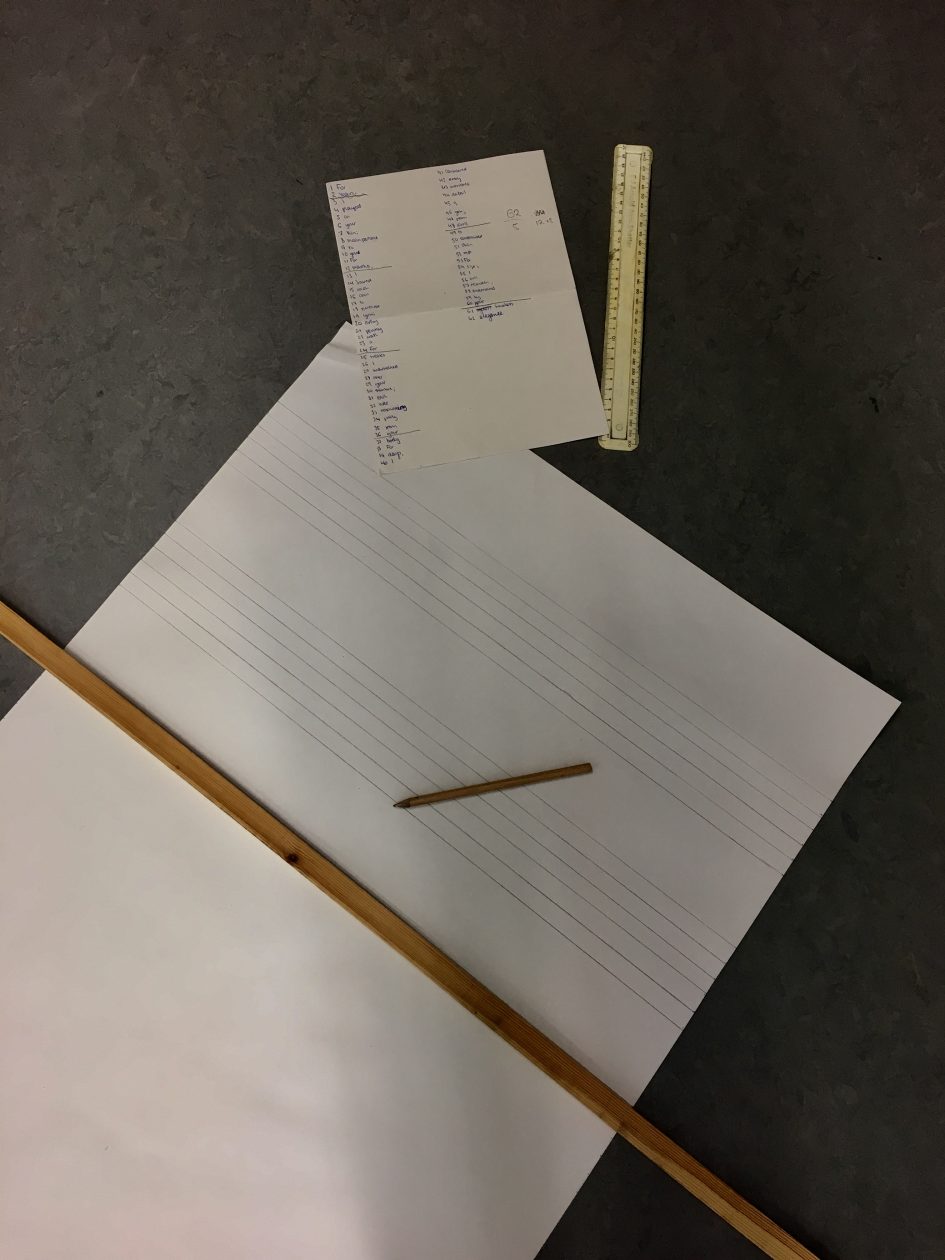
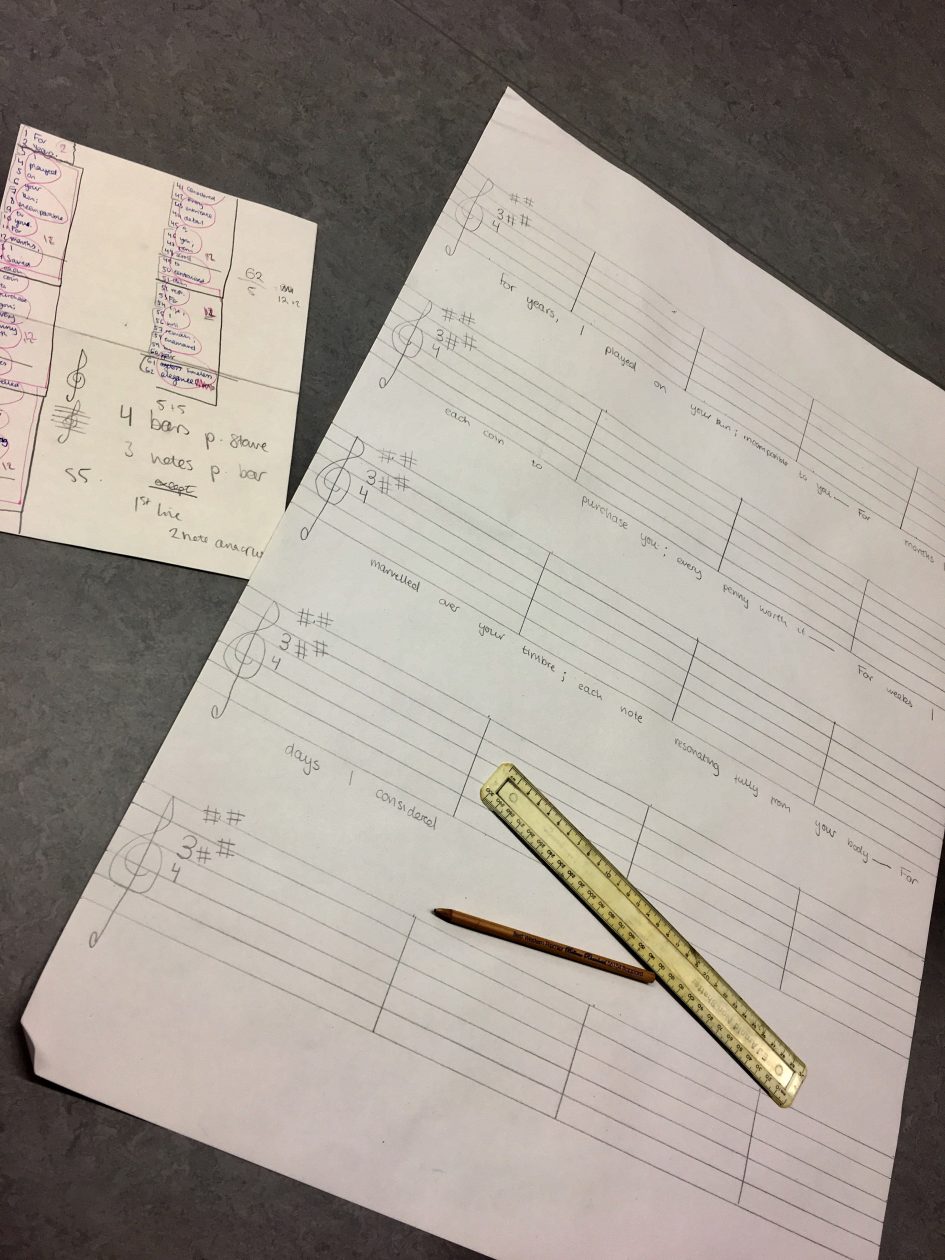
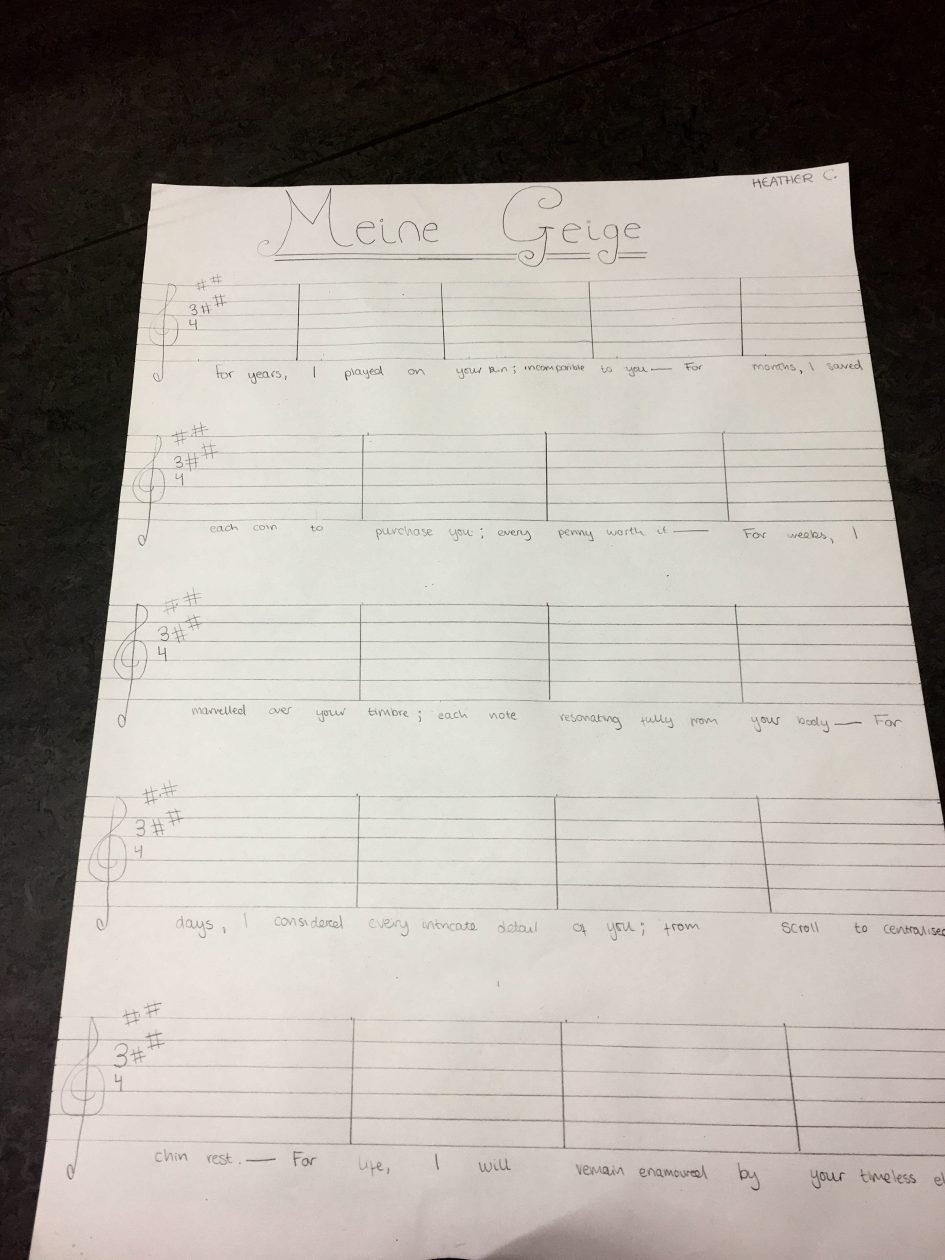
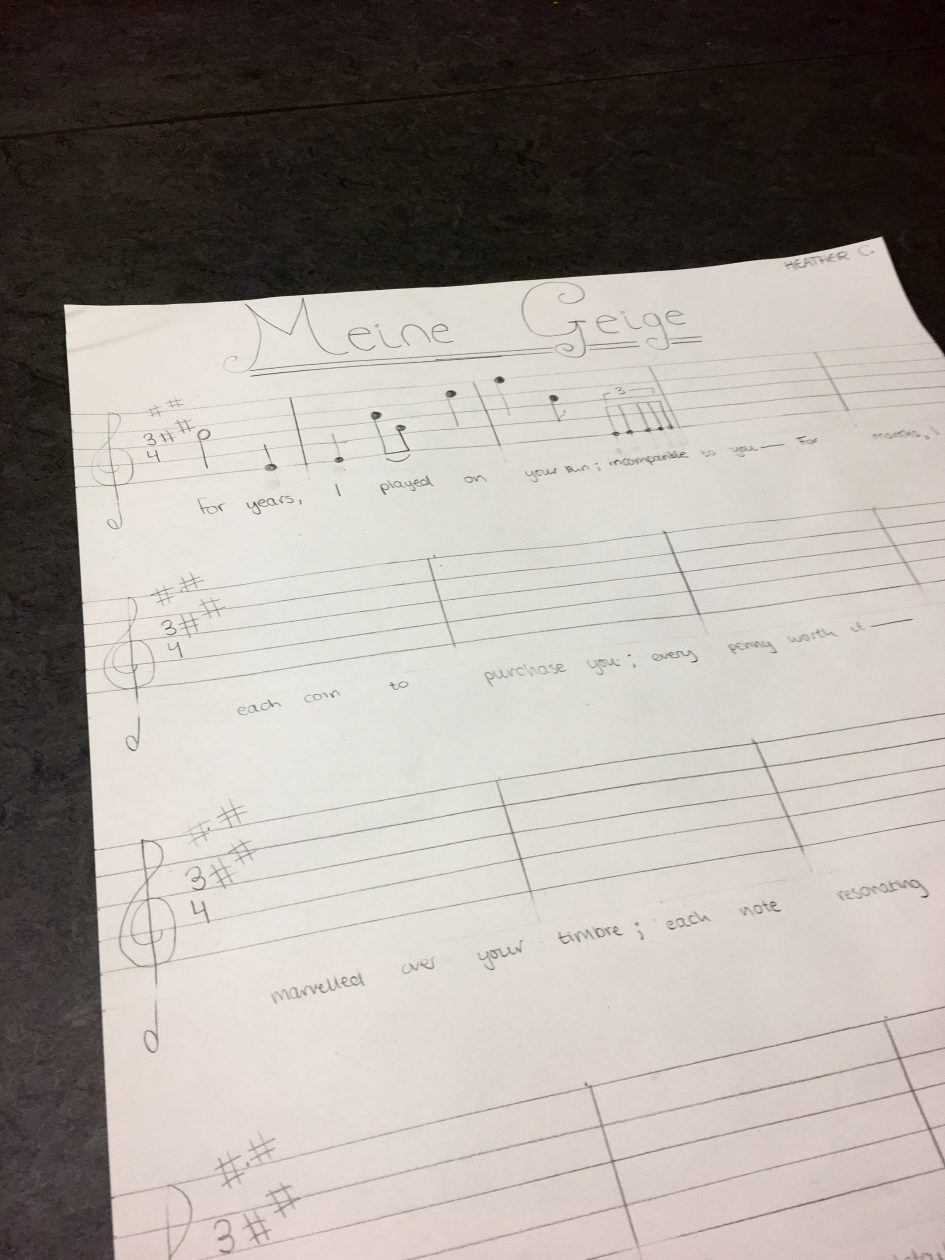
We continued with the evocative object project, transforming our 62 words into a piece of work that reflected our object. As my object was a violin, I chose to create a large-scale sheet of music, using my words as ‘lyrics’.
It was particularly difficult, in my opinion, to create the stave, finding markings down the paper, using a conventional ruler (I had to count down both sides).
Though there were challenges, I found this particularly rewarding when it all started to come together.
I recognise that anything that would be a challenge for me would be even more challenging for children, so this task let me see from their perspective.
I plan to finish this next week, or from home.
We also learned of STEM–>STEAM.
STEAM is integral, in my opinion, as it is undeniable that the Arts play a large part in STEM subjects.
STEAM is also an integral area for a student-teacher to research, as this will set us apart from current teachers; we can add oxygen and give fresh perspective to old thinking. This modal is future thinking, as it proves one’s creativity – creativity is such an important asset as it’s something that sets us apart from machines. Machines may be efficient, but we will always have creativity, and this gives us job security.
“Research shows that when learning is fragmented, students often fail to understand how various subject areas are integrated with each other […] interdisciplinary learning has the potential for building higher-order thinking skills and helping students form meaningful connections between subject areas.” (Capraro and Jones, 2013)
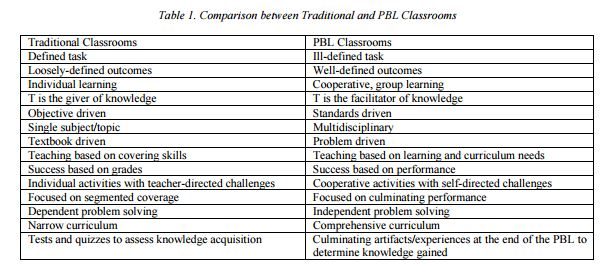
STEAM is also an invaluable asset to pupils, as it allows them to see their subjects as interconnected, and gives them perspective on career paths – they will have a better idea of which field they want to go into, because this subject has been taught in a practical, hands on, play-related way – real life is practical.
STEAM allows for Bloom’s Taxonomy Higher Order Thinking Skills to be utilised and honed. The Arts and STEM subjects share the Create and Apply sections of Bloom’s Taxonomy, allowing children to gain better experience of these skills through cross-curricular, relevant and challenging activities/tasks.
During a recent cinema visit, I viewed the following advert/trailer:
This made an excellent link to STEM subjects, and I feel that this would also make a strong link to STEAM, as Art & Design are integral to STEM subjects (as discussed above). I would therefore find this an appropriate lesson starter when introducing STEAM lessons to a class. This video also discusses the ‘Gender Gap’ in STEM subjects, and I feel that integration into STEAM is an appropriate way to aid in tackling the gender gap.
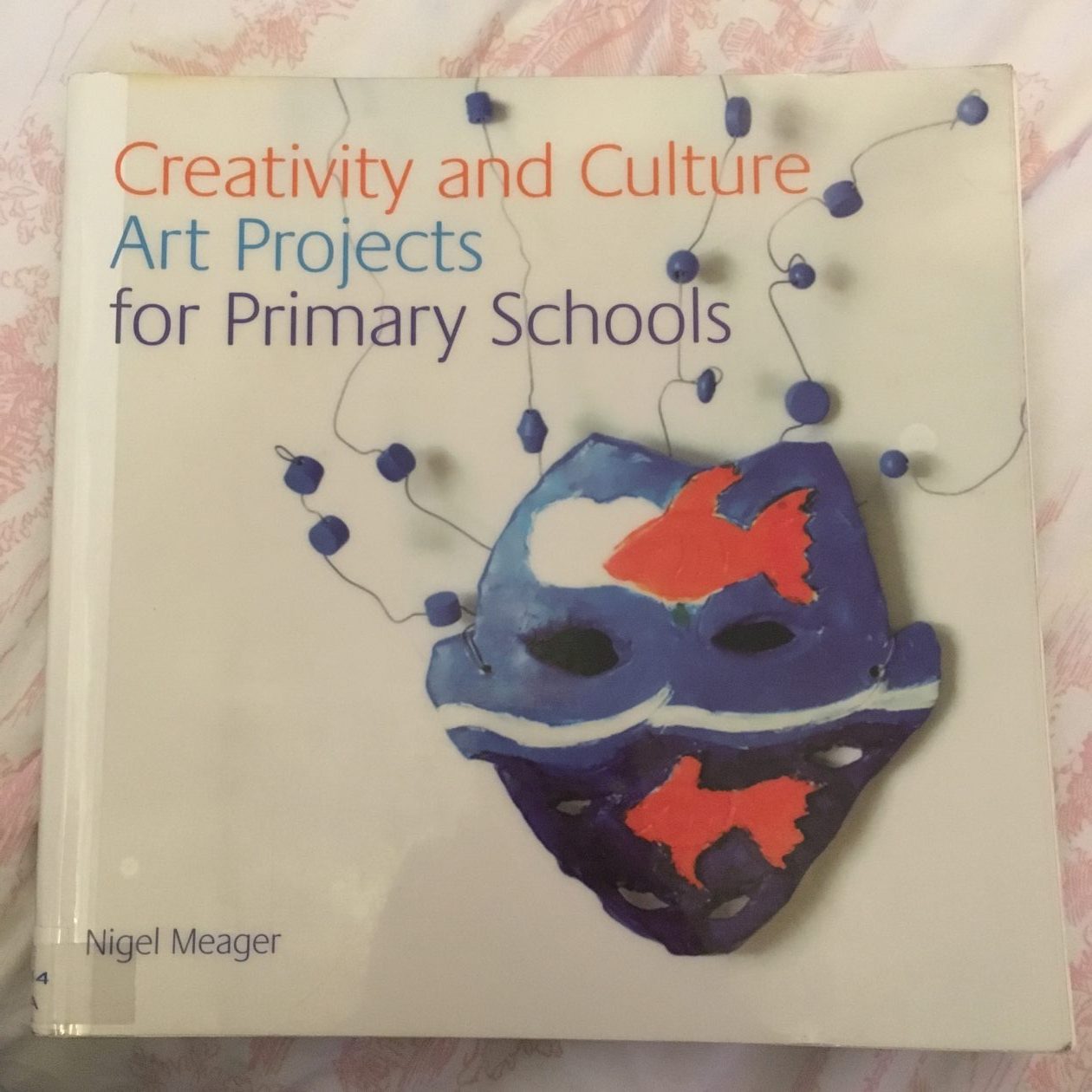
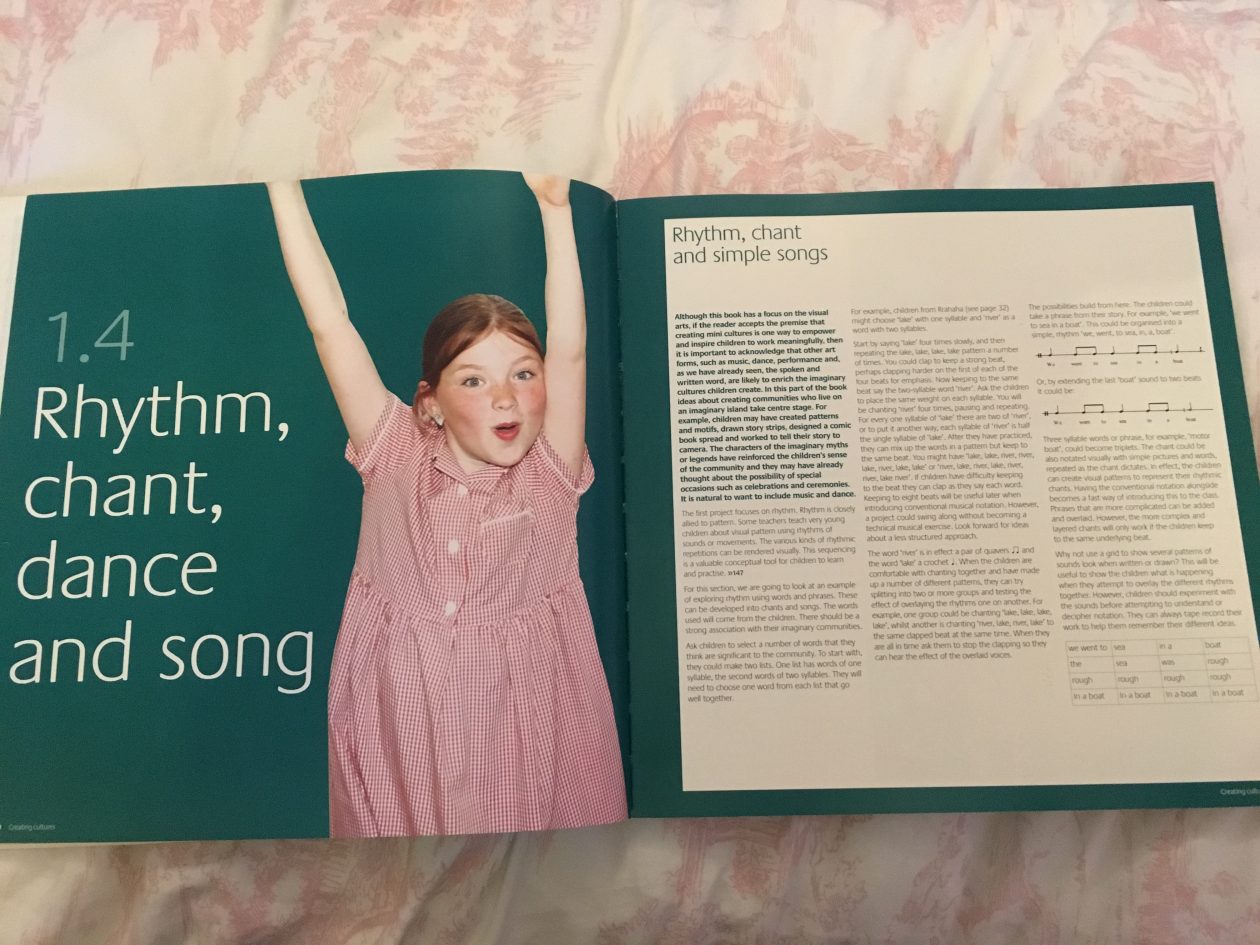
On recommendation, I have sought out “Creativity and Culture: Art Projects for Primary School” (Nigel Meager). After scanning the book, I have several ideas for integration with Literacy and Numeracy for my Placement – with particular reference to pp. 50 – 52 (pictured above).
References:
Meager, N. (2006) Creativity and Culture: Art Projects for Primary School. 1st Ed. Corsham: NSEAD
Capraro, M. and Jones, M. (2013) Interdisciplinary STEM Project-based Learning Capraro, R., Capraro, M. and Morgan, J. (eds.) STEM Project-based Learning: an Integrated Science, Technology, Engineering, and Mathematics (STEM) Approach. [Online] Boston: Sense Publishers. Available: Springer Link. [Accessed: 05 March 2017].
